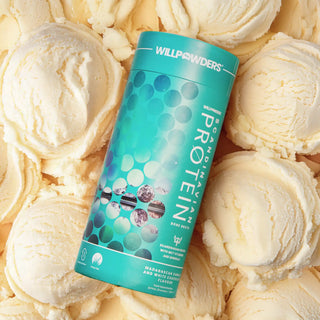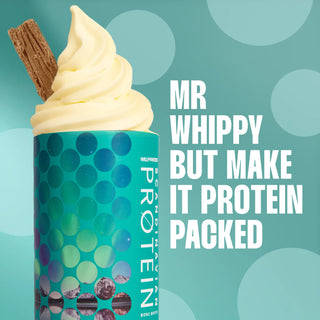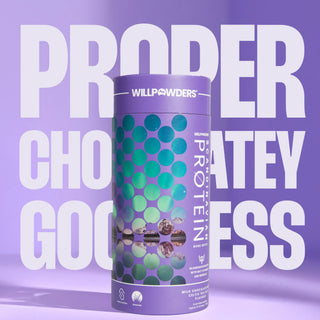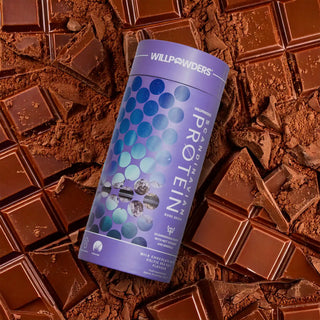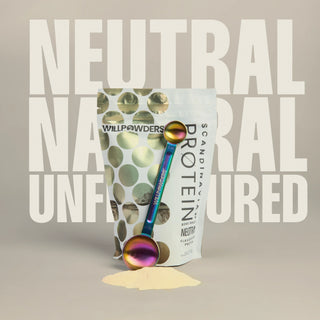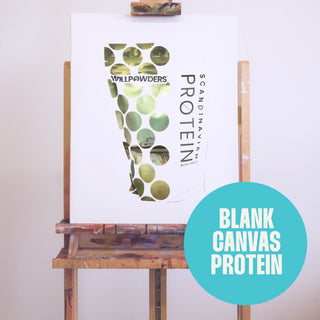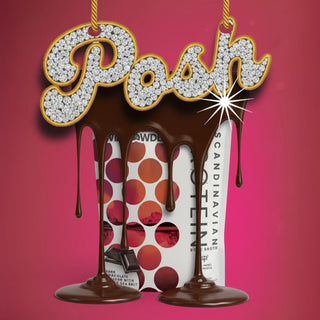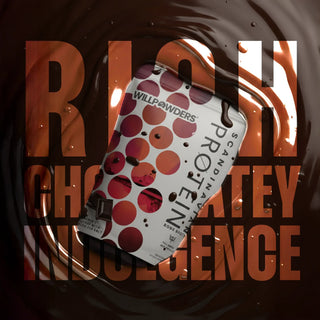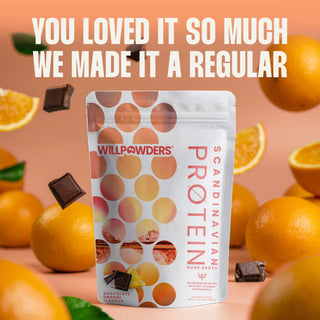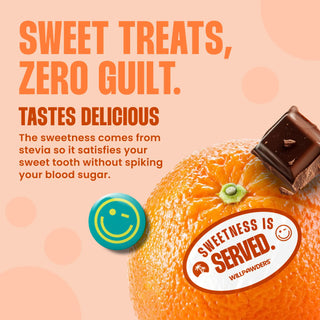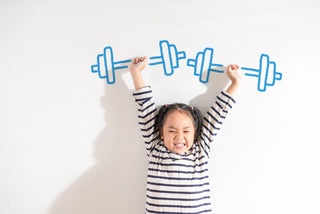
Bumps, Scrapes, Super-Stimuli and Stress
Collagen 101: Can kids take collagen? The one in which we explore why they should and how the stressors of our children’s lives affect their collagen production and so their growth and repair - it’s the collagen for kids edit.
Our children do not grow up surrounded by bubble wrap!
And besides, they need to learn risk taking and resilience, even though we might have our hearts in our mouths for a good proportion of their childhood. I mean, who hasn’t held their breath when mi’laddo or her ladyship decides to start climbing trees or there’s an impromptu trip to the local skate park? Of course they get bumped and scraped by life, physically and we pick ‘em up and patch ‘em. But, at WillPowders, we think it’s worth taking a little time out from the busy-ness of regular childhood and considering whether the range of physical stressors our little darlings encounter are also being compounded by mental stressors. Might our children be caught in a loop of one stress impacting on another, compromising their collagen production (it is)?
Being a kid ain't what it used to be!
The mental stressors our children are now under, often when we hand them over to the classroom and, as they grow, the world of social media, are unprecedented in the history of childhood. Plus, there’s that thought that needles away at the back of our minds that maybe the way we’ve structured our own adult lives is overwhelming for our children. They’re out of bed and in the car before their tummies have even realised they’re up and they can be out of our sight, the very people who champion them the most, for, sometimes, eleven hours. When we pick them back up we have to sift through their day when we barely have any words left because we’re so tired that we are trying not to just sit in a corner rocking and dribbling.
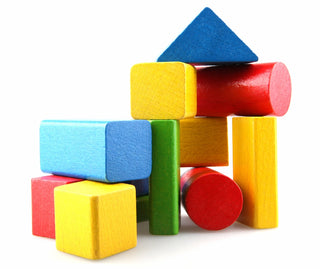

There’s plenty to mitigate against, for sure.
However, a very practical starting point is to fortify those rugrats with some essential amino acids - those building blocks of life itself - so that we take at least one stress out of their day and we give their bodies a chance to say, I’m doing ok, to the brain and let the brain follow suit, accordingly. Chuck in some bovine collagen to their nosh plus some good old-fashioned conversation and the job could be a good ‘un!
Collagen and wound repair - they’d better not be picking those scabs!
But, of course, every kid adores a good scab and quite rightly so - they are the fascinating Hallowe’en type creations of Mumma Nature with a good dose of collagen thrown in for special FX! For kids (and maybe some of us parents too - Scab Pickers Anonymous, anyone?) there’s nothing better than working your fingernail under that edge, just to have a look-see, mind you. But we all know what happens next. Before long, there’s blood seeping out of our little darlings again and their wound repair mechanisms are working overtime. Collagen is key for wound healing. Type III collagen starts the whole healing shebang off and then Type I gets a turn. That’s one of the reasons why we plump for the cleanest Swiss collagen which has both collagen peptide types at your healing service. Moo-ha! Even when a cut or graze is visibly healed, the process of collagen remodelling ‘continues for months after wound closure’ which is why we say slip a sachet of our WillPowders Bovine Collagen Peptides into their baked beans on sourdough toast (although they will happily and tastelessly disappear into any old liquid, hot or cold) daily as collagen continues to increase ‘the tensile strength of the repaired tissue [...] to about 80–85% of normal tissue if all processes proceed without any perturbations’ [*]. Essentially, everything will be well again but try not to pick, kiddiewinkles, because that’s perturbation!
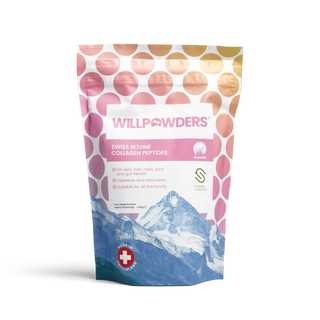

When Mr. Bump pays a call and leaves them with a broken bone
Few things are more heartbreaking than when the littl’un has a broken wing. Bumps and scrapes are part and parcel of childhood, right? But, then some kids get through childhood without a broken bone in sight. Lucky them and lucky us if we are spared the hours in A&E with our child cradling their latest FOOSH (and if you haven’t gone through that rite of passage as a parent, good for you, that’s a fall on an outstretched hand)! But, if you ticked the box in the pre-order for one of those non-accident prone children and the universe failed to deliver, then, at WillPowders, we’ve got you. When it comes to your child’s body and its fracture repair capabilities, hydrolysed bovine collagen peptides that support Type III collagen may be a superb addition to your parent apothecary stores.
Sticks and Stones ...
Breaking a bone is physically stressful - the shock and pain of the injury, the trauma of sitting in A&E along with the broken and bruised, and then being put through a series of x-ray positions that may well have really hurt, being patched up in a cast and then, within what seems like minutes, school demanding their attendance and pressuring you with a series of statistics about Little Charlie’s presence in school. Before they know it, they’re back on the merry-go-round before they’ve had a moment to process what the heck happened to them. Alas, teaching our children deep rest seems to be an anathema to the current education system when it comes to healing. #sadfaceemoji
So, alongside the physical trauma, inside, there might be some residual hypervigilance that the world isn’t quite the safe place they once thought it was. Stress produces cortisol which itself crushes the body’s ability to produce collagen. Collagen Type III is needed in increased quantities to help repair broken bones. It seems that Collagen Type III may be key in determining a cell’s fate (as in a rush of cells that end up mending that fracture in this case) but, honestly, this is one for the body to know (as it surely does - it’s been healing bones like a boss forever) and scientists to work out, because even they admit that understanding how a cell’s fate is determined is complex and plenty of what’s going on is still to be discovered [*]. However, those boffins do know that Type III collagen increases during the healing period for a broken bone so, we say, if they have a fracture and they’re not already on collagen supplements, it might be a good time to bung them some. Let’s make it easy on their little bodies and give them the nuts and bolts in collagen peptide terms to meet the demands of increased Type III collagen’s role in bone healing.


But I’m already doing them a favour by giving them a sport!
Don’t get us wrong - the human body loves to move and is at its happiest, along with the brain, because they’re a married couple, when it’s offered a wide range of movement across the day. So, we guess our children’s bodies and brains love to have plenty of cartwheels to perform, balls to kick about and nooks and crannies to climb into. General ‘wisdom’ (coughs loudly) would tell you that you need to carb ‘em up for this stuff. But, our WillPowders computer says, no!
Amino Acid Magic
Of course, they’re going to need energy to execute that perfect tennis rally, but carbs will not repair muscles. For that, you need amino acids because athletic children and little live wires have greater stressors on their growth and repair. Those hulking teens that we’ve raised, who’ve already spent a good few years bouncing around on their joints and are beginning to perfect a sport in which they are becoming elite for their age, might gain support from supplementing with collagen as it has been shown to provide a range of benefits including reducing joint pain, improving joint functionality and increasing pain-free time to exertion and collagen synthesis. Additionally, taking collagen one hour prior to exercise may aid in reducing functional joint pain and improving muscle recovery [*].
Alongside the collagen boost, given that your teen might well be beginning to eye up protein powders (and we do a fabulously clean range here and, if you’ve got a 16+ teen who is athletic or super active, they might like WillPowders Protein Powder with Creatine and Shilajit, you might want to suggest good, clean collagen supplementation as well as, or instead. Bung them some Vitamin C to help them soak up that collagen, or slip the taste and odour free powders into those isotonics that they are so fond of while pointing out that they’d be better off with a delicious WillPowders ElectroTide that is sugar free. Because, there’s no greater satisfaction than showing them you know more about fitness than the ‘carpet-carrying’ gym bunnies your teen is increasingly enamoured by at the gym!
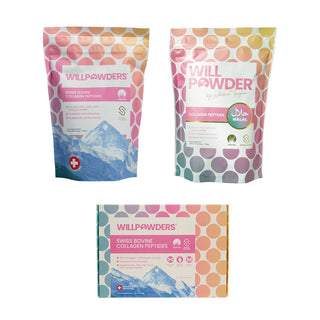

Support the body and you support their mood
Not long after your children were set in motion, they were a series of collagen pockets. Yup! No kidding! Into those pockets grew vital organs and structures such as bone. Collagen is the framework for the whole of the body, providing a lattice within and between which cell types collect. While we are concerned with buying blazers that they can grow into, their little bodies are concerned with making sure that those collagen pockets get bigger to accommodate for growth. It all adds up to a lot of work for their little bods and the process demands the right amino acids which we can supplement with hydrolysed bovine collagen peptides. Given that kids, like us, are made up of 90% collagen, it’s a wonder the stuff’s not a topic for more general discussion when the Health Visitor pays a call. But, it isn’t too late to join the collagen supplement party - they grow until they’re through puberty and out the other end.
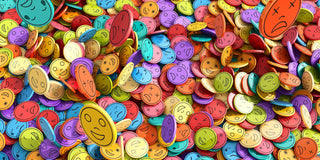

But having to feed our children for growth is no big surprise to us as parents.
Apparently, feeding ‘em’s a legal requirement, which is well worth remembering when you’ve sat down for the first time all day and they demand Dinner 2.0 and you have to stand right back up again! However, what we might not have factored in is the idea that stress can suppress collagen production and that a key ingredient of collagen is glycine which is linked to mental health. We live in times when the tax on our children’s mental health has never been greater. The NHS reports that 1 in 5 children between the ages of 8 and 16 now have some sort of mental disorder [*] which makes us both sad and angry at WillPowders because the link between the food our children eat and the mood they experience is still not firmly in the discussions we have as a society. Unfortunately, the advertisements for high sugar products seem to drown out the wiser voices in our current climate. We don’t blame any parent who has been sucked in by all the wrong messaging and now realises they can’t do right for doing wrong. Add to this the testing (in all senses of the word) experiences they encounter in education in these crazy times - does anyone care to discuss the finer points of defining and adjectival phrase? - and we’ve got a little sproglet that is living practically in crisis with a nervous system that is on constant overload.
But, all is not lost.
The glycine in our WillPowders Collagen Peptides could help combat the stress this has on their gut linings, as well as supporting their mood and sleep. The amino acid glycine could be a little miracle worker for its potential as a dietary way to combat low mood and has excited scientists in recent years[*]. Glycine makes up a whopping 33% of bovine collagen peptides, which is just as well because glycine is always present in any collagen fibrils in the body, regardless of the jobs they go on to do. It helps heal the gut from those sugary snacks they’ve been sneaking from the child who smuggles contraband Crunchies to school. This healing subsequently helps the gut-brain axis as a healthy gut is linked to a healthy brain in terms of a reduced risk of anxiety and depression. Scientists are busy beavering away on this piece of science with mice but, rest assured, that the mice in the glycine test set seem to be having a lovely old time! No tears before bedtime there!
With so many of this generation caught in the infinite stress - cortisol - collagen-suppression feedback loop and the possible detriment this could have to their growth, repair and mental health, wouldn’t it be amazing to harness the power of glycine for them?
The body makes no distinction between real and imagined
Thankfully, gone are the days when the elders of the tribe suggested that playing video games would give our children real blood lust, maybe because all self-respecting grandparents also have their own avatars these days who range around the internet in niche role play games … Nowadays, we can trust that our children know the difference between the Battle Royale in a game and a race around the local park with a Nerd, sorry, Nerf gun! However, the truth is that their bodies simply don’t know the difference between real and imagined scenarios in the least. If the brain imagines being part of it, and how enraged do our children sound when they are screaming at an opponent in a game whose just done them over, the body will respond accordingly.
So, while your child might be the proverbial mild-mannered janitor Hong Kong Phooey by day while off the games, chances are that they’re experiencing every last nuance of survival stress when they are on them. We might have done our very best to provide a home that is a sanctuary akin to a Buddhist retreat, but, once they are deep in a virtual reality, as far as their nervous system is concerned, they are in a combat zone. Remember that stress corrodes the body’s ability to produce essential collagen. Top ‘em up by stirring some collagen peptide powders through their liquids or into the family tea. Last time we looked, there wasn’t a law about slipping them some essential amino acids. Tell them it’s an emergency survival pack for their best gameplay - real or imagined!
Further Reading
Mathew-Steiner, Shomita S., Sashwati Roy, and Chandan K. Sen. 2021. "Collagen in Wound Healing" Bioengineering 8, no. 5: 63. https://doi.org/10.3390/bioengineering8050063
If you would like to read more on cell fate, try this, and good luck to you! Casey MJ, Stumpf PS, MacArthur BD. Theory of cell fate. Wiley Interdiscip Rev Syst Biol Med. 2020 Mar;12(2):e1471. doi: 10.1002/wsbm.1471. Epub 2019 Dec 12. PMID: 31828979; PMCID: PMC7027507.
To read more about how Type III collagen regulates osteoblastogenesis and the quantity of trabecular bone try Volk SW, Shah SR, Cohen AJ, Wang Y, Brisson BK, Vogel LK, Hankenson KD, Adams SL. Type III collagen regulates osteoblastogenesis and the quantity of trabecular bone. Calcif Tissue Int. 2014 Jun;94(6):621-31. doi: 10.1007/s00223-014-9843-x. Epub 2014 Mar 14. PMID: 24626604; PMCID: PMC4335719.
To read more about the exciting possibilities of glycine and the brain try Search for a Major Depression Signal Reveals a Familiar Face: Discovery Opens New Possibilities for Treatment
Disclaimer
Our blogs are written with love in the hope that they go some way in helping you feel like the rockstar you are, and whilst we do our due diligence, research like maniacs and fact check our stuff, we know everyone’s journey is different. They are intended to educate and empower you, not usurp medical advice. We would never advise you to stop, adjust, or modify any prescription medication without the direct supervision of your healthcare practitioner, but don’t be afraid to talk to your doctor about your new found knowledge, brought to you by the marvels of nature because they don't know everything! Blogs are always informed by Davinia but often written by a member of the team. Not all blogs reflect Davinia's experiences and sometimes provide alternative perspectives

 Collagen
Collagen
 Protein
Protein
 MCT
MCT
 Electrolytes
Electrolytes
 Vitamins & Minerals
Vitamins & Minerals
 Hormones
Hormones
 Nootropics
Nootropics
 Kombucha
Kombucha
 Biohacking Books
Biohacking Books
 Bundles
Bundles
 Accessories
Accessories










